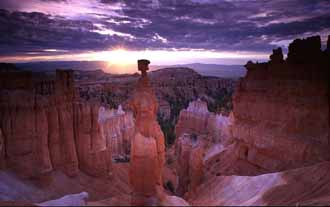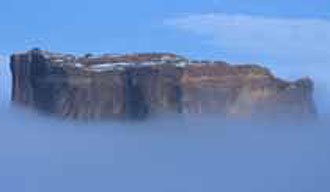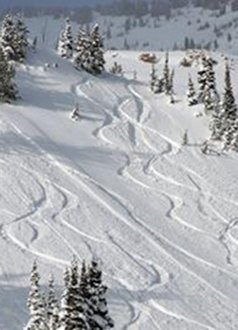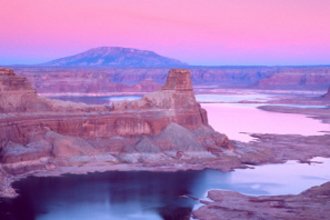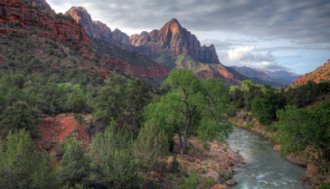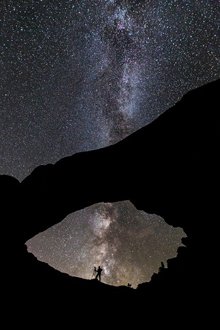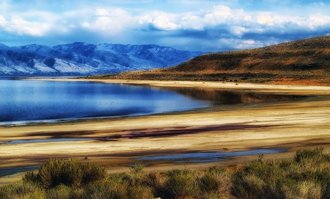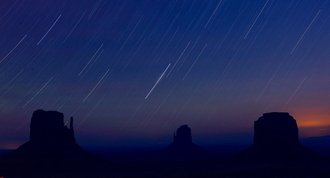That You Were Never The Same?
Elk Hunting In Utah
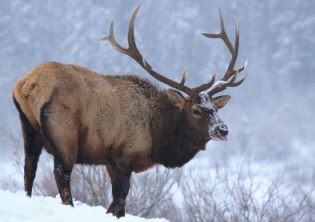
In 2008, elk hunting in Utah produced the new Boone and Crockett Club world record non-typical elk . Yes, the largest antler rack ever recorded.
If you like to hunt elk, photograph elk, or even just watch them, Utah is the place for the biggest elk on the planet. And the antlers that they shed.
The elk population and elk hunting in Utah has exploded. From 2000 to 2006, no other state produced more record-book bulls than Utah!
And this doesn’t mean it’s only a haven for elk hunters.
The growing numbers of wildlife watchers and photographers in the state can enjoy the same fantastic opportunity as hunters.
But this is a page for people interested in elk hunting in Utah.
A big hand has to go to Utah big game managers. Some pretty awesome game management decisions have been made by the Utah Division of Wildlife Resources (DWR). If you want to hunt, photograph or just see elk, Utah is the place.
Over the last 30 years, elk numbers in Utah have exploded. Elk are the second most abundant big game species in Utah. Second only to mule deer. The 2003 post-hunt estimate for elk in Utah was just over 58,000. This is below the management objective of 68,400.
The population has leveled off and stabilized over the last few years however. Depending on water levels in the state, elk numbers are reduced or allowed to rise accordingly. Higher water levels improve range conditions, allow for more elk, and enhance elk hunting in Utah.
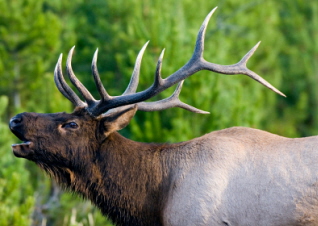
What Kind Of Elk Live In Utah?
Elk are members of the deer or cervid family. Deer, moose and caribou are also members of this family. Males grow boney antlers which they shed each year.
Like mule deer and other cervids, these antlers fuel many a hunter’s passion for hunting. One interesting note. A bull elk’s antlers start growing immediately after they are shed in late winter.
If you’ve ever seen a photo of European red deer, you’ll see some similarities to North American elk. They’re members of the same species. Elk are also known as Wapiti. A Shawnee Indian name, it means, quite literally, white rump.
There are six subspecies of elk on the North American continent. All elk in Utah are members of the subspecies Rocky Mountain elk (Cervus elaphus nelsoni). The Rocky Mountain elk was officially designated the state animal in 1971.
Male elk are known as bulls. Females are cows. Young ones are calves. Calves are born from the middle of May through early June. Elk are social animals.
In early summer, they form herds or bands of cows and calves which can number several hundred. As the summer advances, these groups start breaking up into smaller groups.
Bulls isolate themselves from these bands during the summer as their antlers are growing. They may hang together in small groups themselves.
An interesting phenomenon bull elk share with other members of the cervid family is the velvet covering their antlers. It provides nutrients to the rapidly growing antlers.
If you’ve ever felt velvet-covered antlers, you’ll know why they call it velvet. By early August, this velvet starts falling off. The antlers end up hard as bone and gain their familiar points.
Life Cycle Of Elk
Like mule deer, the breeding period for elk is called the rut. It starts in early September and continues through mid October.
Early September is when the bulls start bugling to gather cows into their harem. These harems may consist of 10-20 cows. Sometimes more.
A bull elk’s bugle is like no other sound in the world. A combination of bellows, screeching whistles and grunts serves several purposes for the mature bull elk:
- to attract more cows to his harem. The more the merrier.
- to intimidate young bulls not ready to challenge him.
- to let young up-and-comers know he’s ready to take them on if they want to try to take his harem.
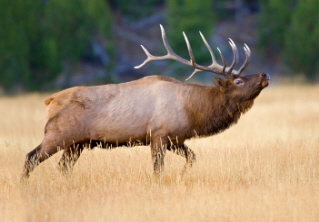
A rutting bull will defend “ownership” of his harem against all rivals. And satellite bulls will try to steal that harem.
It’s an ongoing yearly battle until a mature bull gets too old to ward off challengers. Nature ensures only the best and brightest carry on.
Once the rut ends, bulls move away from the cows and calves. They either stay alone or band together with other bulls. In late fall and winter, it becomes quite common to see large groups of bulls hanging together. A magnificent sight.
By late spring, cows seek solitude to prepare for the birth of their calves. And yearlings are driven away. They are forced to find new home territory. In fact, spike bulls may travel long distances to establish new territory for themselves.
As the new calves are born, the cycle starts all over again.
History Of Elk In Utah
Prior to settlement by the Mormons, elk and bighorn sheep were the most numerous big game animals in Utah. Elk hunting in Utah was a significant source of food and clothing for Indians, trappers and settlers.
Like so many other species ... bison and mule deer for example ... elk were the victims of unlimited hunting in Utah. By the close of the 19th century, they had almost disappeared.
With no restrictions, hunted to near-extinction. What a sad time that must have been. No deer. No elk. No bison.
Elk hunting in Utah was shut down in 1898. From 1912 through 1925, elk were transplanted from Yellowstone National Park to try to give the species a chance at comeback.
Where were they released? Well, pretty much where you would expect to find elk today in Utah:
- Manti
- Logan Canyon
- the Fish Lake area
- the Oquirrh Mountains
- Mount Nebo
- Mount Timpanogos
Through the years, many elk have also been transplanted from one area of the state to another. Southern and eastern Utah have gained elk from some of the intra-state relocations.
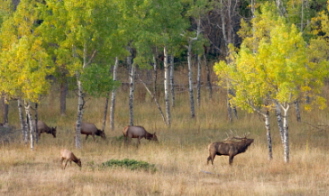
Types Of Hunts
A Wildlife Board and five Regional Advisory Councils today manage all wildlife management in Utah. Until 1967, elk hunting in Utah was restricted under a limited entry system. As the numbers grew, most of the units were switched to an open bull season.
In 1989, the two largest units, Manti and Fish Lake, were switched to a yearling only hunt. Yearling only was later replaced with a “spike only” regulation.
At the same time, it was expanded to three other units. Today you’ll find elk hunting in Utah managed under the following regulations:
- spike only.
- any bull.
- limited entry.
Where In Utah Will You Find Elk?
Elk can be found in quite diverse habitats in Utah because they thrive on a varied diet. You’ll find elk in all of Utah’s mountains. In low-lying deserts. And in between.
They eat grasses, shrubs and other types of browse. Of course where they live and what time of year it is dictate the amounts of each. And water must usually be available within a short distance or they’ll move on.
If you’ve enjoyed elk hunting in Utah, you know they love cover. They’ll move to avoid humans. Big elk like dense thick cover. Isolation and safety.
Elk are migratory creatures and they’ll move long distances between their summer and winter ranges. Even so, there are always exceptions and you’ll find some elk that stay in the same general area year-round.

The Future Of Elk Hunting In Utah
The future of elk hunting in Utah is dependent on healthy and growing elk herds. A healthy growing elk population needs the habitat necessary to sustain growth. If habitat is reduced or degraded, there will be fewer elk. Simple as that.
Despite the loss of prime elk habitat in many parts of the state, it is a testament to Utah’s game managers that herds have continued to grow and elk hunting in Utah is the best it’s ever been.
Even so, in much of the state, crucial elk range is being reduced. Development and urbanization are taking more and more of this land away. Road construction and energy development have sliced right through some of the best elk habitat in the state.
And OHV use has exploded along with the state’s population. These factors are all having a deleterious effect on elk herds. And elk hunting in Utah may suffer accordingly if it continues unchecked
As you can read on my deer hunting in Utah page, maturation of some of the vegetation in the state is proving to be detrimental to elk as well as mule deer. Conifers are replacing high country aspen forests.
Not good for elk or deer. Annual grasses and weeds that don’t favor healthy elk herds have overcome a lot of the shrub covered winter range.
Want To See A Trophy Elk Hunt In Utah?
While sportsmen and hunters are always looking to see elk numbers grow, livestock owners are usually looking for the opposite. A couple of excellent programs have been developed in Utah to minimize landowner concerns about elk numbers.
Elk unit management plans now specify the maximum number of elk allowed on each unit. And, with the creation of CWMU and landowner permit programs, landowners can benefit financially from allowing hunters to hunt on their land.
Private agencies, especially the Rocky Mountain Elk Foundation have worked to improve the health of elk herds and explode the level of interest in elk throughout the west. And dramatically opportunities for elk hunting in Utah
The main predators for elk are mountain lions, black bears and coyotes. But their effect is minimal. Without grizzly bears and wolves living in Utah, predators just don’t cause large reductions in the elk population of Utah.
OHV (off highway vehicles) use in Utah, as elsewhere, has increased 100-fold in the last 30 years! By the end of 2004, more than 160,000 OHV’s were registered in Utah!
While driving OHV’s is a passion for many people and a legitimate use of public land, uncontrolled use will continue to negatively impact many of Utah’s best places.
OHV use on public land needs to be well planned and managed to prevent the destruction of critical elk habitat. While the use of OHVs on public land is a legitimate right, their uncontrolled and improper use not only damages elk habitat, it can kill elk.
For this reason, there has been an increased demand for more areas to be designated as walk-in and horseback only areas. Remote areas with fewer hunters and no OHV traffic.
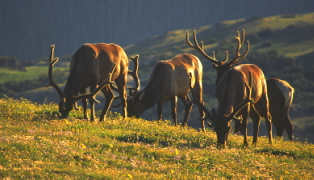
How To Plan A Utah Elk Hunt
Elk hunting in Utah is gaining more interest and notoriety with each passing year. Remember that from 2000 to 2006, no other state produced more record-book bulls than Utah!
Demand for the limited entry hunts in Utah are very high and this demand is growing every year. In 2004, 46,319 hunters applied for 1378 limited entry permits. An increase of 5,342 over the year before! There were a total of 34,193 general season permits sold.
Seeing elk in the wild is one of the most exciting things I’ve experienced. As with mule deer, units that produce monster bulls are attractive to both hunters and wildlife watchers.
At Hardware Ranch near Logan, 30,000 to 50,000 people each year enjoy viewing elk as they gather and feed. You can even take a sleigh ride out among the feeding elk.
If you’re looking to get a chance at a trophy Utah bull elk or just simply want a great experience while elk hunting in Utah, there are a couple ways to go.
Utah has a wide assortment of professional outfitters ready and willing to help you go on the hunt of a lifetime.
If you have the resources, hiring one of these outfitters is absolutely the best way to go. They have access to land no one else has. They know where the elk are and you don’t have to worry about having thousands of other people invading your space.
And, once again, they have access to land throughout the state. Utah has some of the most amazing trophy elk on the planet and these people will get you to where they live.
If you don’t have the resources or the desire to hire an outfitter, take a look at the big game proclamation on the Utah Division of Wildlife Resources website at http://wildlife.utah.gov/hunting/ .
It’ll give you the best overview there is about elk hunting in Utah. You can apply for one of the general permits or one of the lottery-type limited entry hunts. If you’re applying for one of these, plan a year ahead.
Hunting Seasons
All hunting seasons are set yearly. Information on big game seasons is available in January. Small game information can be obtained by late August each year.
The best source of information for elk hunting in Utah is:
The Utah Division of Wildlife Resources
1594 W. North Temple
Salt Lake City, Utah 84116
801-538-4700.
Or go to their website at:
http://wildlife.Utah.gov/hunting/
(Will open a new window)
Are You An Elk Hunter?
Do you love the outdoors? Have you hunted elk in Utah before?
Then you already know there are few things as enjoyable as sitting around a campfire, sharing hunting stories with friends and family!
Telling your hunting story and showing photos of your Utah elk hunt gives others the chance to experience a little bit of your hunt.
People with whom you share your story get a lot of joy out of it. And it also adds to their knowledge of the outdoors and hunting especially in Utah.
Show YOUR KNOWLEDGE to friends who share your passion!
But the difference here is that:
Share the Best of Your Utah Elk Hunt!
And a great photo?
Then share them! They will be enjoyed by people from all over the world... for years to come.
Thank you for sharing them with all of us!
What Other Visitors Have Said
Click below to see contributions from other visitors to this page...
Antlerless Elk Hunt in the Fishlake Area 




I have been drawn for an antlerless elk hunt in the Fishlake plateau area. It opens 11/23/11. What is the likelihood of snow on the ground at that time …
The DWR did not do a wonderful job! Not rated yet
You failed to mention in your Elk Hunting in Utah article that elk have been introduced into habitats not historically occupied by elk. For example, there …
Back to top
Back to Hunting in Utah
Back to Home Page


